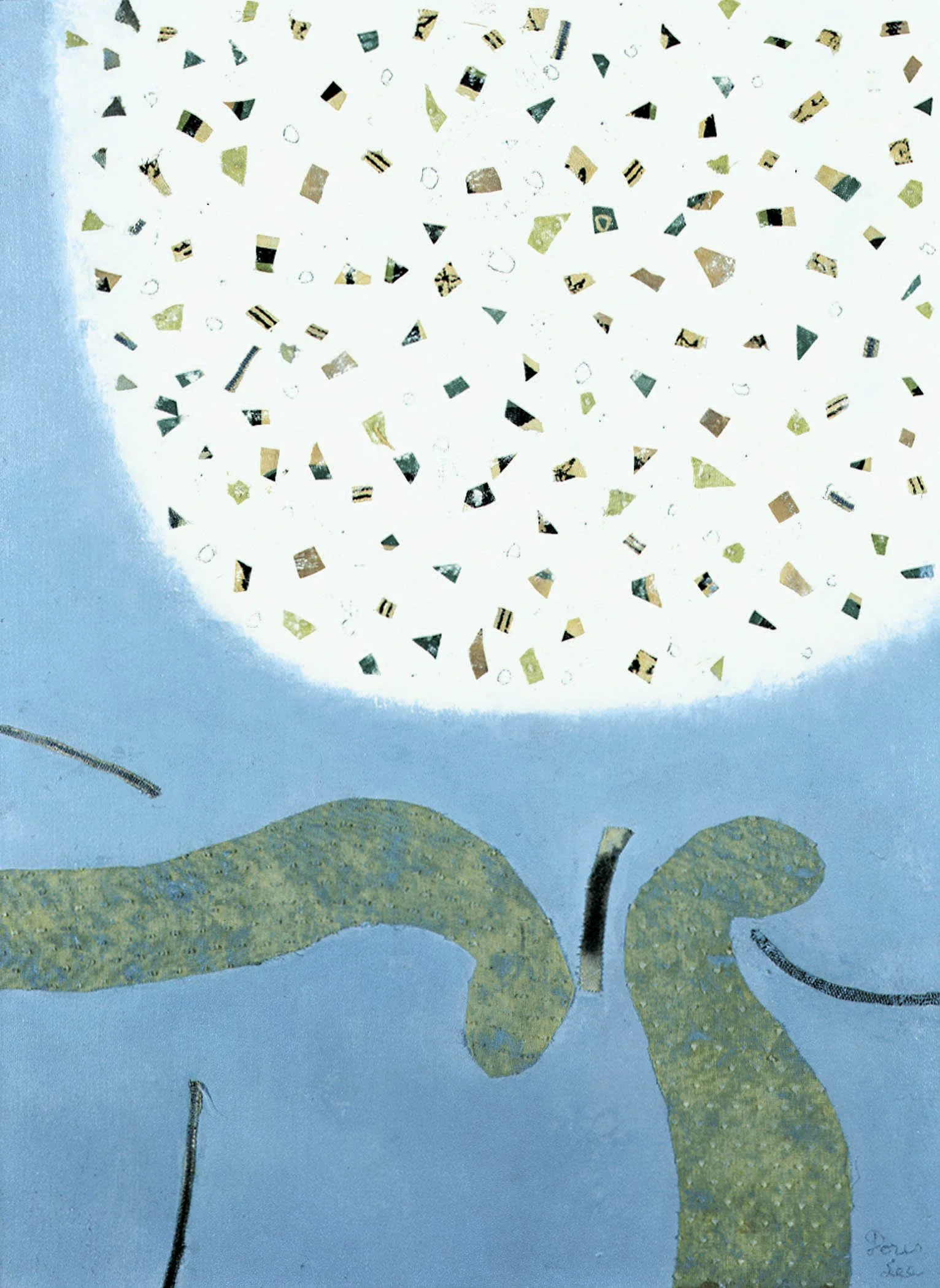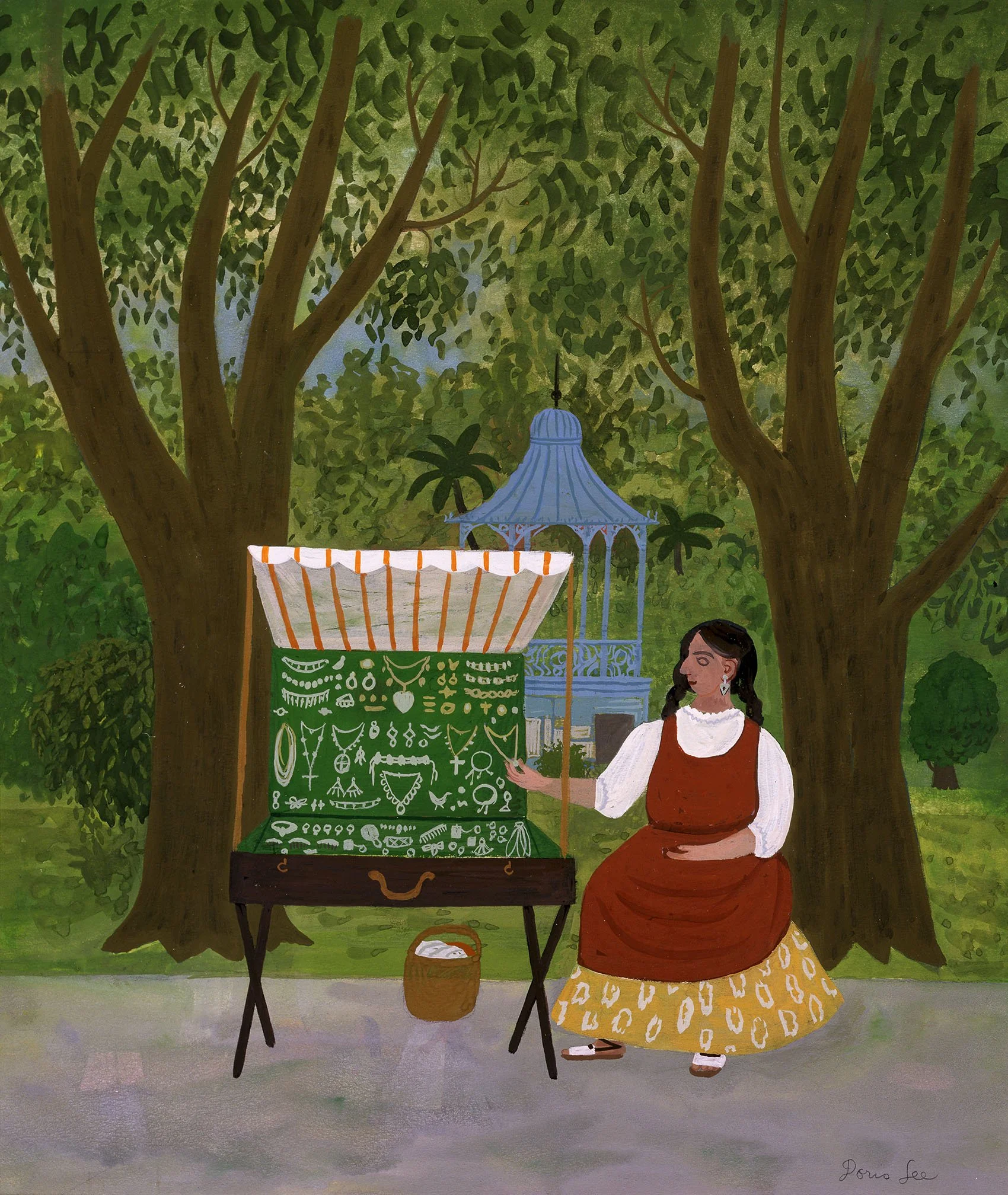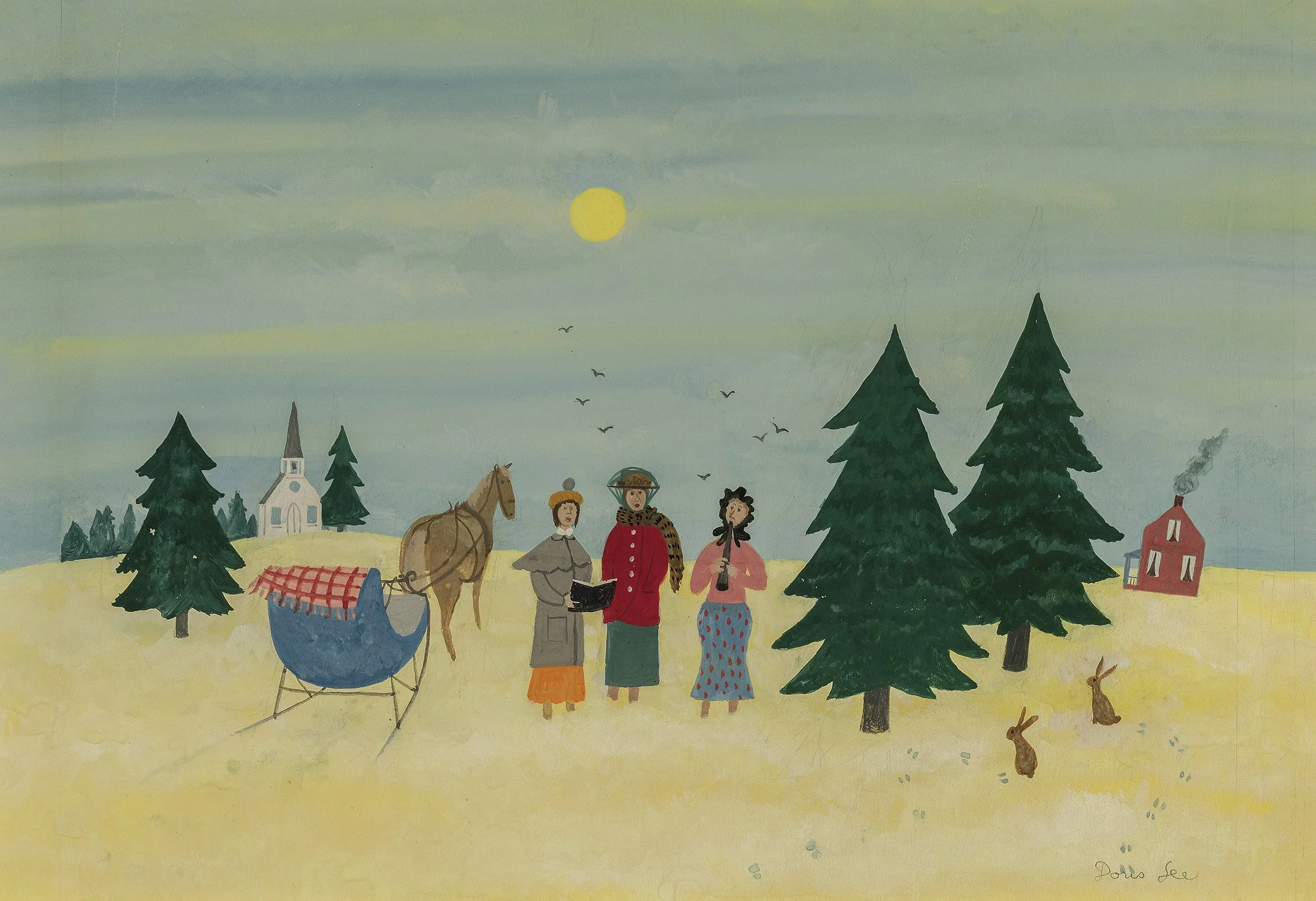DORIS LEE (1904-1983)
Traveling exhibition Simple Pleasures: The Art of Doris Lee
organized by the Westmoreland Museum of American Art continues through 2023
Available Work | Biography | 2022 New York Times Feature | 2008 New York Times Review
Biography • Doris Lee (1904-1983)
Doris Lee, born in Aledo, Illinois, was one of the most successful female artists of the Depression era. Her earliest major career achievement came in 1935 when she was awarded the Logan Prize at the Art Institute of Chicago for her painting titled Thanksgiving. The painting received overwhelming support from the public and critics alike and was acquired for the Art Institute's permanent collection. Shortly after receiving the Logan Prize, the Treasury Department awarded Lee the commission to paint murals in the Washington, DC Post Office Building. This was an impressive accomplishment for a young woman struggling for acceptance in the male-dominated art world of the time.
Lee studied at the Kansas City Art Institute with the noted Impressionist Ernest Lawson; in Paris with the cubist painter André Lhote; and in San Francisco, at the California School of Fine Arts with Arnold Blanch, whom she later married. In 1931, Lee moved permanently to Woodstock, New York, and established herself as a leader in that important artist's colony. Woodstock has been a special place for the arts since 1902 when Ralph Whitehead, a follower of John Ruskin, founded an art colony in the hamlet of Woodstock that he called Byrdcliffe. The town's close proximity to New York City guaranteed a regular flow of artists between the colony and the metropolis, keeping it in touch with current developments in the arts. The Art Students League of New York helped to create that flow when it established a summer school in Woodstock in 1906 that brought two hundred art students into the town each summer.
The 1930s marked the beginning of a long and productive career for Lee. Her work included easel paintings, murals, prints, illustrations, and costume, textile, and ceramic design. Lee's work from this period concerned life in rural America, and in a stylistic and ideological sense, has much in common with Regionalism. She portrayed the simple joys of American life in touching, nostalgic, and sometimes fanciful ways. Her paintings are sophisticated portrayals of color, mood, and design. Lee's paintings were exhibited in the first Whitney Biennial exhibition in 1932. April Storm was acquired by the Rhode Island School of Design in1933, and in 1935, Thanksgiving was purchased by the Art Institute of Chicago. In 1936, the Maynard Walker Galleries became Lee's dealer, a relationship which lasted until 1950. An additional boost to the artist's fame and prestige came in 1937 with the purchase of Catastrophe by The Metropolitan Museum of Art. From 1936 to 1939, Lee was invited to be a summer guest artist at the Colorado Springs Fine Arts Center. During the late thirties she began her her winter sojourns in Florida with her husband, Arnold Blanch. The 1930s finished with a flourish when Lee was invited to exhibit in the 1939 New York World's Fair.
In the 1940s and 1950s, Lee's work became more stylized, more concerned with pure form and color. Her simple, flat paintings portrayed gardens, seasonal landscapes, and women and children on the beach. In 1943 and 1944 Lee was guest artist at Michigan State College in Lansing, Michigan. She received many painting assignments from Life magazine during these years. She was awarded the prestigious Carnegie Prize in 1944 and was included in fifteen of the annual juried exhibitions at the Pennsylvania Academy of the Fine Arts. Doris Lee worked in Hollywood, California during the winter months of 1945. She toured Central America in 1946, and went to North Africa in 1951. During the 1950s and 1960s, Lee's dealers were Associated American Artists Gallery and World House Galleries, both in New York City. She participated in both one-man and group exhibitions with these dealers. Her paintings from this period, characterized by bold designs, evocative colors, whimsical subjects and ironic art historical references, established her unique position in the context of modern art in America.
Lee produced a significant body of abstract work during the 1960s. In these paintings, she combined her knowledge of international styles, her interest in American folk art, and her early training in abstract painting with André Lhote. The works celebrate Lee's private experience of the world, and synthesize her personal, emotional response to her subject matter. In an effort to engage the viewers' entire field of vision, Lee used broad expanses of color, often geometrically organized. Her traditional subjects of humanity and nature were either abstracted into pictographs or retained semi-abstract traces to help the viewer make the leap from the artist's mind to her metaphysical subjects. During this period, Lee experimented with black and white biomorphic shapes and calligraphic brushwork. The late works still contained the subtle, wry humor of her earlier work.
Lee retired from painting at the end of the 1960s. She died in Clearwater, Florida in 1983. In addition to the Art Institute of Chicago, the Rhode Island School of Design, and The Metropolitan Museum of Art, Lee's work can be found in many public collections, including the Whitney Museum of American Art, Phillips Collection, Washington, DC, Cleveland Museum of Art, Pennsylvania Academy of the Fine Arts, National Museum of Women in the Arts, and the Greenville County Museum of Art, Greenville, SC.




















